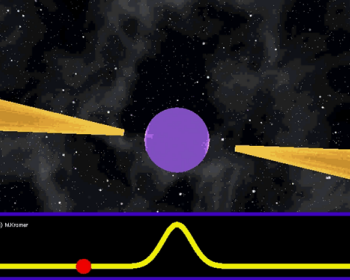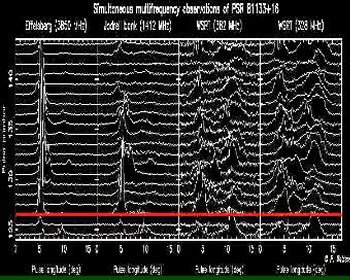

Click here if you are having problems playing videos.

Evolution of the Double Pulsar System. Pulsar A is formed in a supernova explosion and is later 'spun up' by the secondary star as matter is accreted onto A's strong gravitation field. The other star later collapses and forms pulsar B in a second supernova explosion.
Credit: John Rowe animations

The ultimate fate of the double pulsar system as the two stars coalesce in 85 Myr time due to the emission of gravitational radiation. The gravitational wave emission is depicted as the ripples in spacetime - the green grid shown in the background. Gravitational wave detectors now coming online aim to detect such events out to the distance of the Virgo supercluster.
Credit: John Rowe animations

A rotating neutron star acts as a cosmic lighthouse beaming radio waves into space. The rotation of the star and finite size of the emission beams mean that the radiation we receive on Earth is in the form of pulses spaced by the spin period of the neutron star.
Credit: M Kramer
 Simultaneous observations of pulsar B1113+16 at four frequencies, using the Westerbork Synthesis Telescope (Netherlands), Lovell (UK) and Effelsberg (Germany) telescopes.
Simultaneous observations of pulsar B1113+16 at four frequencies, using the Westerbork Synthesis Telescope (Netherlands), Lovell (UK) and Effelsberg (Germany) telescopes.
Credit: P. Weltevrede